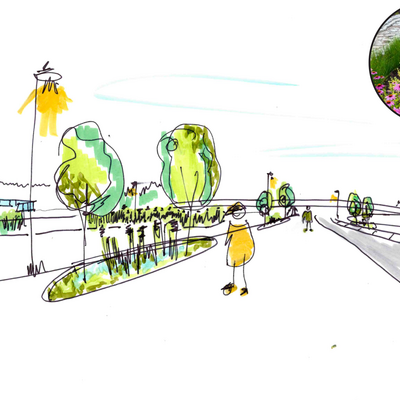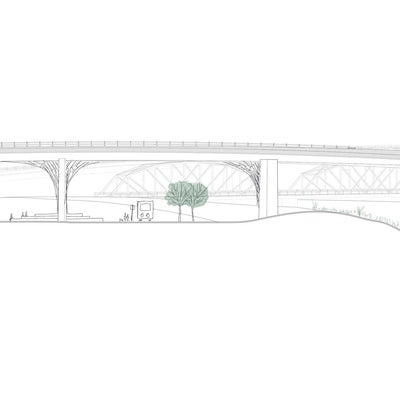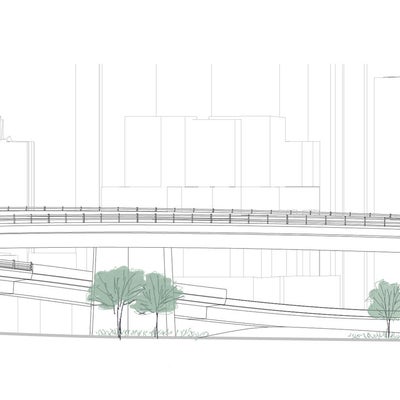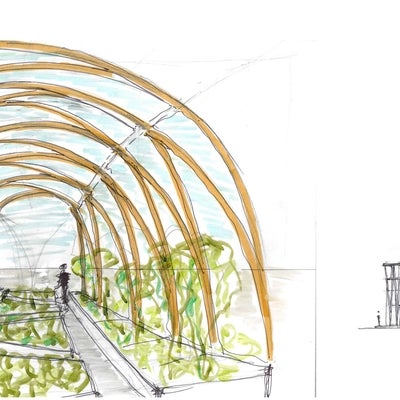DIALOG’s design residency in honor of Tom Sutherland invited 9 students from 6 Universities across North America to take part in a 4 day design challenge set in the heart of Calgary, along the Bow River. I applied to represent the University of Waterloo with an interest in contributing to the dialogue through my research interest in how the built environment can foster socio-cultural experiences and relationships with Water.
The design residency began each morning with a walk through the East Village to Dialog’s Calgary studio, getting to know each other and the neighborhood. This would continue with a group consultation – in Dialog and Snohetta’s recently completed Calgary Central Library – with stakeholders from The Drop-in Center, Calgary Police Services, Calgary Municipal Land Corporation, The East Village Neighborhood Association, and Indigenous Engagement Representative Kori Czuy. These group consultations gave us meaningful insight into the qualities and challenges of East village, stakeholder needs, and the rich potential of the site.
Kori Czuy advised us that in a very short project, centering our focus on the land and in this case Mohkinstsis (the Bow River) – it’s history, the teachings it has to offer, and fostering connections to it – could bridge the gap between preliminary stages of design and more in-depth engagement with Indigenous Nations and stakeholders. This connection to the land was further emphasized in DIALOG’s first challenge to us; creating and sharing land acknowledgements which celebrated the lands and Waters that shaped us, as a way of getting to know each other and center the land in our thoughts.
We also learned that; The drop-in center was the largest in North America; that crime rates were very high in the area; that the unhoused were often the victims of violent crimes committed by the housed, that there was a sense of ‘othering’ occurring in this section of the East Village. In our own experiences on the site, we noticed that spaces are physically and socially disconnected by flyovers, major thoroughfares, and barbed wire fences which together compromise the safety and comfort of stakeholders.
We then used DIALOG’s Community Wellbeing Framework, as a launch pad for thinking about stakeholders, strategies, opportunities, and potentials for our proposals to build wellbeing within the community. Through this process we identified the site issues as being disconnection, othering, and spatial inequities. After a great deal of discussion, diagraming, and framing the challenges and opportunities of the site and its conditions we built a strategy based on three touchstones.
These were designing for Dignity, encouraging Stewardship, and building Common Ground, which together comprise our parti: Confluence. The idea of confluence is born of the convergence of the Bow and Elbow River which meet a kilometer downstream from our site. It embodies a way of thinking about three expanding sets of stakeholders, Drop-in users, East-Village, and Greater Calgary, and their coming together around the traditional Blackfoot gathering place of Mohkinstsis.
We proposed:
1. further activating the amenity of Calgary’s River Walk, with public artworks that allowed people to share their stories, giving Riverfront Dr. a road diet, and by fostering its adaptability into a temporary pedestrian street for events.
2. Repurposing the Calgary Municipal Land Corporation’s sales center into a community space and adding a winter garden to the temporary social space.
3. Removing the fencing along Dermit-Baldwin and creating a public plaza to increase the dignity of Drop-in center users, increasing access to the River, and the comfort of those passing through the site through site-lines, plantings, and public artworks.
Thank you to DIALOG, The Memory of Tom Sutherland, Mohkinstsis, Doug McConnell, Neal Philipsen, and fellow participants – Abigail McLaren, Danielle Soneff, Deepali Dang, Jordan Zacher, Marie Pudlas, Nadia Perna, Sabrina Alcock, and Clifford Vickrey.







